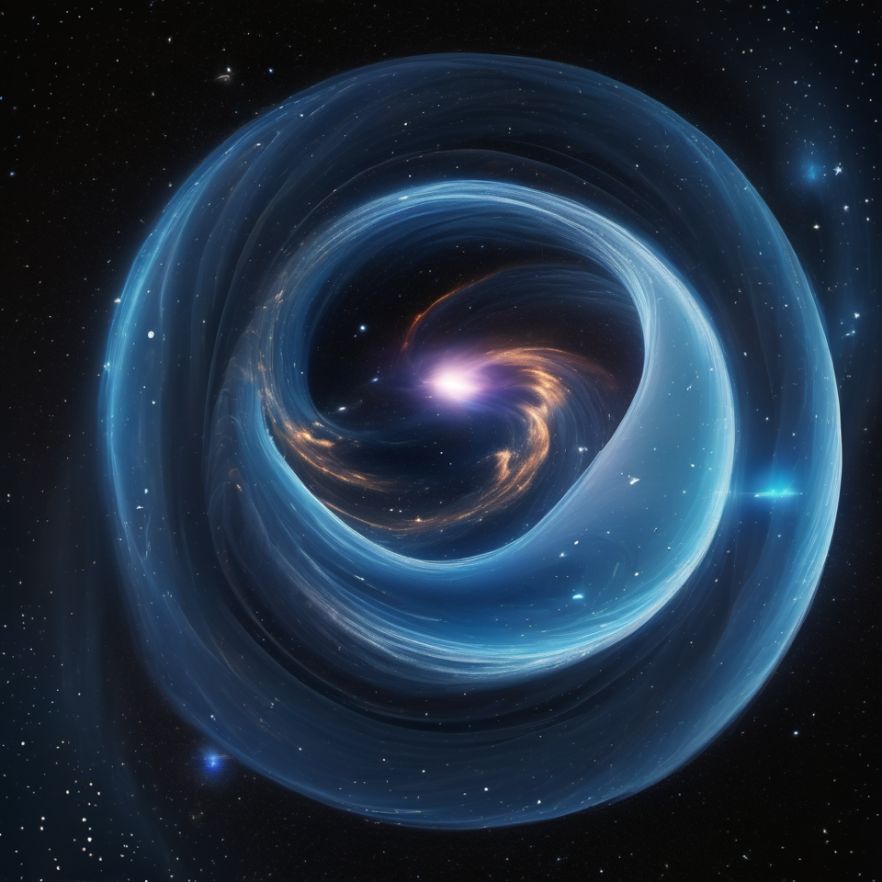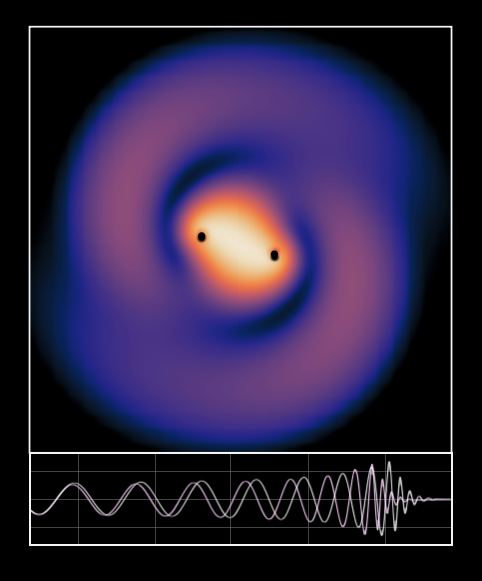Solving General Relativity: Black Holes and Warp Drives
Numerical simulations for gravitational wave modelling
In 2015, ripples in the fabric of spacetime called gravitational waves were detected for the first time. Researchers at Queen Mary School of Mathematical Sciences are world leaders in predicting these signals using numerical codes that run on the largest supercomputers in the UK. Their work has shed light on the potential for signals from new physics emerging at high energies, and they have even produced the first realistic waveforms from Star-Trek style spaceships using warp drive technology. They are now in the process of preparing for future detectors, for which calculations will need to be orders of magnitude more precise, and are harnessing the potential of GPU technology to meet this challenge.
 Representation of warp bubble collapse
Representation of warp bubble collapse
Gravitational wave signal from the merger of two black holes in a dark matter cloud
- More information: Centre for Geometry, Analysis and Gravitation
- Contact: Dr Katy Clough

